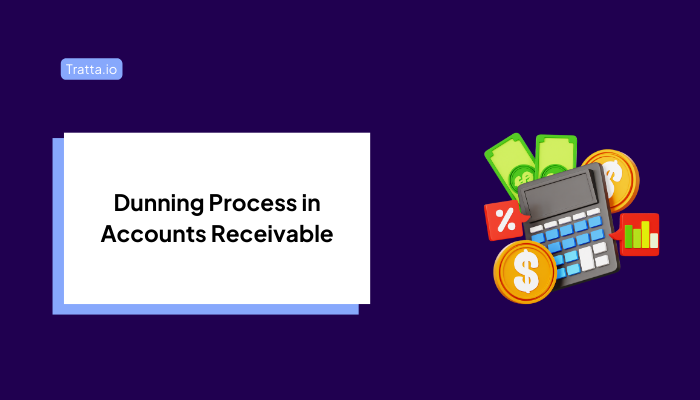
Managing overdue payments is critical to maintaining cash flow and financial stability. The dunning process is a structured approach to reminding customers about unpaid invoices and ensuring timely collections. Whether you are a collection agency, law firm, or credit issue company, a well-executed dunning strategy can significantly improve recovery rates while maintaining professional relationships with debtors.
In the U.S., where businesses lose billions annually due to unpaid invoices, having a transparent and compliant dunning process is essential. A study by PYMNTS found that 93% of companies experience late payments, affecting their ability to operate efficiently. Organizations can use automated reminders, personalized communication, and legal follow-ups to enhance their collections process while staying within regulatory guidelines.
This blog will discuss the dunning process, explore its role in collections, and highlight best practices to improve payment recovery.
The dunning process is a systematic approach businesses use to follow up on overdue invoices and ensure timely payments, which is crucial for maintaining steady cash flow. This process typically begins with gentle reminders and progresses to more formal collection efforts, such as notices and legal action, if necessary.
A well-structured dunning process is essential for businesses like collection agencies, law firms, and credit management companies. Without a clear and consistent process, outstanding receivables can accumulate, leading to financial strain and inefficiencies in cash flow.
The process usually starts with friendly reminders, gradually escalating to more formal measures as the debt remains unpaid. This approach increases the chances of recovering overdue payments and helps preserve professional relationships with clients.
Dunning ensures that businesses follow a methodical process for requesting overdue payments in accounts receivable. By understanding and implementing each step, organizations can improve recovery rates while remaining compliant with industry regulations.
A well-organized dunning process helps businesses recover debts efficiently while minimizing disruptions to their relationships with clients and partners.
The dunning process follows a series of structured steps to recover outstanding payments while maintaining professional relationships with clients. A clear and consistent approach helps businesses minimize bad debt and improve cash flow.
The process begins when an invoice is issued with clear payment terms. Businesses must monitor due dates and track payments to identify overdue accounts early. Automated tracking systems can streamline this stage, ensuring no missed follow-ups.
If a payment is overdue, businesses send reminders through emails, letters, or phone calls. The tone of communication gradually becomes firmer with each reminder. If the debtor remains unresponsive, escalation may involve stronger notices, late fees, or warnings of further action.
When internal efforts fail, businesses may transfer the debt to a collection agency or consider legal action. Partnering with an experienced collection agency ensures professional handling while increasing the chances of recovery.
Different customers require different collection strategies. By customising dunning practices to specific payment behaviors, businesses can improve their chances of recovering outstanding debts while maintaining positive relationships.
Dunning strategies should be customized based on a customer’s payment history and behavior. A flexible approach ensures businesses maintain strong client relationships while managing overdue payments.
A first-time late payment may be due to oversight rather than an unwillingness to pay. A friendly reminder through email or phone call, along with a clear explanation of payment terms, often resolves the issue quickly.
Loyal customers who usually pay on time might face temporary financial challenges. A personalized approach, such as a gentle reminder or offering flexible payment options, helps maintain a positive business relationship while securing payment.
For clients who frequently miss payment deadlines, a firmer approach is necessary. This includes a structured escalation process with stronger reminders, late fees, and potential enforcement actions such as payment plans or credit reporting.
When customers dispute an invoice, addressing concerns promptly can prevent delayed payments. Providing clear documentation, maintaining open communication, and working toward a resolution helps avoid unnecessary disputes while ensuring timely collections.
Encourage on-time payments by giving customers more control. Tratta’s Consumer Self-Service Platform lets them manage their debt payments independently, improving engagement and resolution rates.
Manual collection efforts can be time-consuming and inconsistent. Automating key parts of the dunning process helps businesses send timely reminders, track payments, and improve recovery rates with minimal effort.
Automation enhances the efficiency of the dunning process by reducing manual efforts, improving payment recovery rates, and ensuring compliance with legal regulations. Here is how automation streamlines dunning and collections.
A well-structured dunning strategy does more than recover overdue payments. It helps businesses maintain financial stability, predict cash flow, and strengthen customer trust.
A well-structured dunning process does more than just recover outstanding payments. It strengthens financial stability, improves customer relationships, and enhances operational efficiency. Here is how an effective dunning strategy benefits businesses.
Understanding payment trends helps businesses act before accounts become delinquent. Tratta’s Reporting and Analytics provide real-time insights to track collection performance and customer behavior.
Simply reminding customers to pay is not enough. Following best practices in dunning management ensures collections are handled efficiently, professionally, and in a way that encourages long-term payment reliability.
An effective dunning strategy is more than just sending reminders. It requires a structured, customer-centric approach that balances persistence with professionalism. Here are the best practices for improving collections while maintaining strong customer relationships.
A one-size-fits-all approach does not work in collections. Tratta’s Customization & Flexibility tools allow businesses to tailor their dunning strategies for better engagement and recovery.
A well-structured dunning process is essential for maintaining cash flow, reducing bad debt, and strengthening customer relationships. Businesses can improve collections by using data-driven strategies, clear communication, and flexible payment options without damaging client trust. Automation and AI-driven tools will further streamline the process as digital solutions evolve.
Optimize your dunning and collections strategy with Tratta’s automated solutions. Schedule a free demo today to see how we can enhance your accounts receivable management.